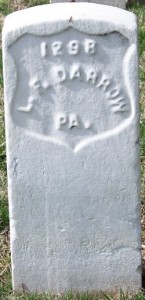Making your Amen Mean Amen
In the Catholic Church saying AMEN is an affirmation of agreement.This word is pronounced before the reception of Holy Communion. An AMEN states that one fully stands by the Church and her teachings. AMEN has origins that were adapted from many languages. It can be traced from English, to Latin, to Greek, then to Aramaic and finally to Hebrew. It is an old word. In Hebrew it comes from a verb (aman) meaning “he confirmed, supported, or upheld” and is also associated with the word for truth (emet). In the Catechism of the Catholic Church it is referred to as meaning “so be it” (2856).
A believer must be in agreement with the Catholic Church in order to receive Communion.This is why the Church requests that only practicing Catholics who adhere to the Church receive. Anyone can go to Mass, but reception of Holy Communion has special requirements due to the Sacrament being the most important of the seven in the Church. In the Holy Eucharist, Communicants receive the very Body and Blood, Soul and Divinity of Christ. It is where one receives Jesus, Himself. Such Catholics should have the proper disposition which means participants should not be conscious of grave sin and normally should have fasted for one hour (guideline of the National Conference of Catholic Bishops). Basically, if one does not agree with what the Church teachings, then one should not receive Holy Communion.The AMEN is one’s statement of this agreement.
Unfortunately we are bombarded with all sorts of news of nominal Catholics who don’t agree with Church teachings. These persons consist of two types.Those who disagree due to honest misunderstanding and being misinformed of what the Church actually teaches. And, those who know the teachings of the Catholic Church but choose not to observe them anyway.
Those who just don’t know what the Church really teaches.
Obviously the first group is not at fault. They could be persons who honestly seek the Truth but have been misinformed. Some never have been to any Church at all. Others might have even gone through Catholic Schools but received a less than accurate dose of Catechism. Many ill-educated Catholics are at the forefront of supporting issues such as abortion, same-sex marriage, contraception, cohabitation, ordination of women, etc. Such persons would be prudent to take steps in learning the true teachings of their faith. This can be done by reading the Catechism for themselves (it is available online and in book form) and the writings of the Saints, praying, going on pilgrimages, getting to know the Blessed Virgin Mary, and seeking out the fellowship of practicing Catholics. Also getting in touch with the Sacraments of the Church is important as this is a source of grace. There are some great websites such as Catholic.com and forums such as at Catholic Answers and the Coming Home Network which provide simple straight forward explanations to issues.
As a convert to the Church myself, I was taken in by the beauty of what the Church actually teaches. Instead of finding a book of dull boring rules, I was delighted at its spiritual depth. Yet, at its heart, the Church makes a lot of common sense for everyday life. Upon first encountering a volume of the Catechism of the Catholic Church, my thought was, “Wow a really smart group of people put this together,” not realizing at that time that those “wise guys” have been compiled and make up the Tradition and history of our Christian faith through thousands of centuries, even before the canon of Sacred Scripture (Bible).
I have heard it said that most people reject the Catholic Church not because of Her Truth, but because of an incorrect understanding and ignorance of what She actually teaches.
Those who know the Faith but reject it.
Those who know the Church teachings but choose to not follow are the most dangerous type. After all, the devil himself knows what the Church teaches. Many of these persons lack humility. They feel that they are more wise and intelligent than the collective wisdom of the Church Magisterium . They don’t need anyone to tell them what to do with their own body or how to live their own life. A common phrase is, “It’s just between me and God.” But in reality instead of being guided by God, they are guided by self. They don’t understand that their actions affect others and have consequences. They tell themselves that they understand freedom, not accepting that sin is bondage. They modify the Ten Commandments, banish God, and even try to drown out established morality to justify their own lifestyle choices. Their motto is, “Don’t judge me.”
Too often judgment of persons gets confused with judgment of actions. A lot of people know the Church’s pro-life position which is against abortion. However what many fail to realize is the Church’s compassion on healing those who have undergone abortion (or any mortal sin for that matter). The Church’s mission is not about judging people but to be in the work of healing and reconciliation. Much like what Jesus said that He came not for the righteous but for those in need of a physician.
Adopting a humble lifestyle.
The way out of pride is to become humble. It is not by chance that the Church celebrates the “little people” as Saints. From St. Francis, the little friar to St. Therese, the little flower, those canonized by the Church are actually an honor roll of the humble. I always say that aging is God’s last ditch effort to help us to become humble. How else can we but accept our limitations when we find ourselves with arthritic joints, failing memories, wrinkling skin, thinning hair, loose bladder and gastric distress, but with humility? And if we have done well on our journey, we will have learned from our past mistakes. A humble person will not say others are being judgmental. They will already know who they are in the eyes of God.
The Holy Gospel according to St. Matthew for this Tuesday (June 26, 2012) states:
Jesus said to His Disciples: “Do not give what is holy to dogs, or throw your pearls before swine, lest they trample them underfoot, and turn and tear you to pieces. Do to others whatever you would have them do to you. This is the Law and the Prophets. Enter through the narrow gate; for the gate is wide and the road broad that leads to destruction and those who enter through it are many. How narrow the gate and constricted the road that leads to life. And those who find it are few.”(7:6,12-14).
I decided to include an image of Divine Mercy because it speaks of Jesus’ mercy and compassion for sinners. That’s all of us!










